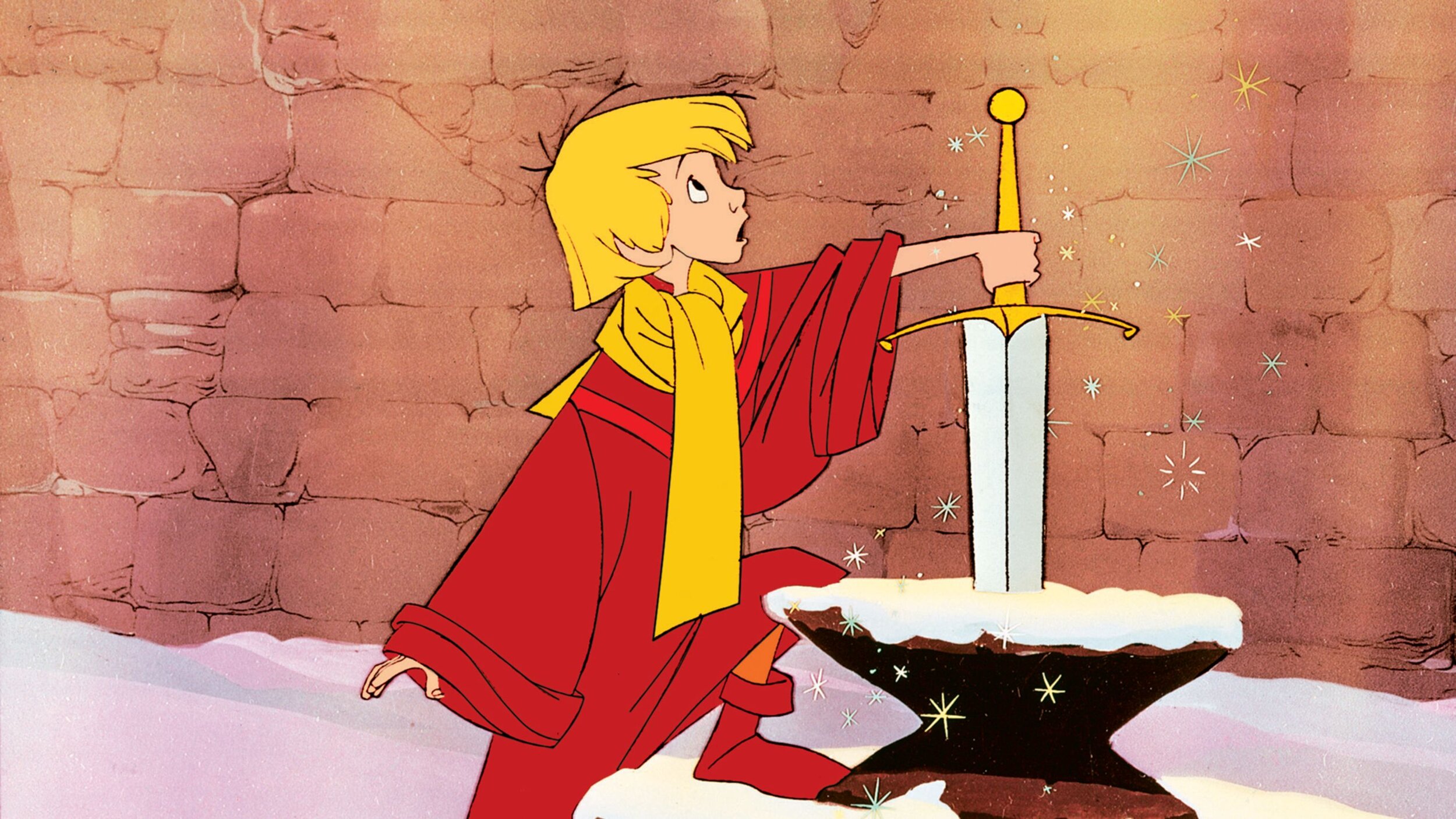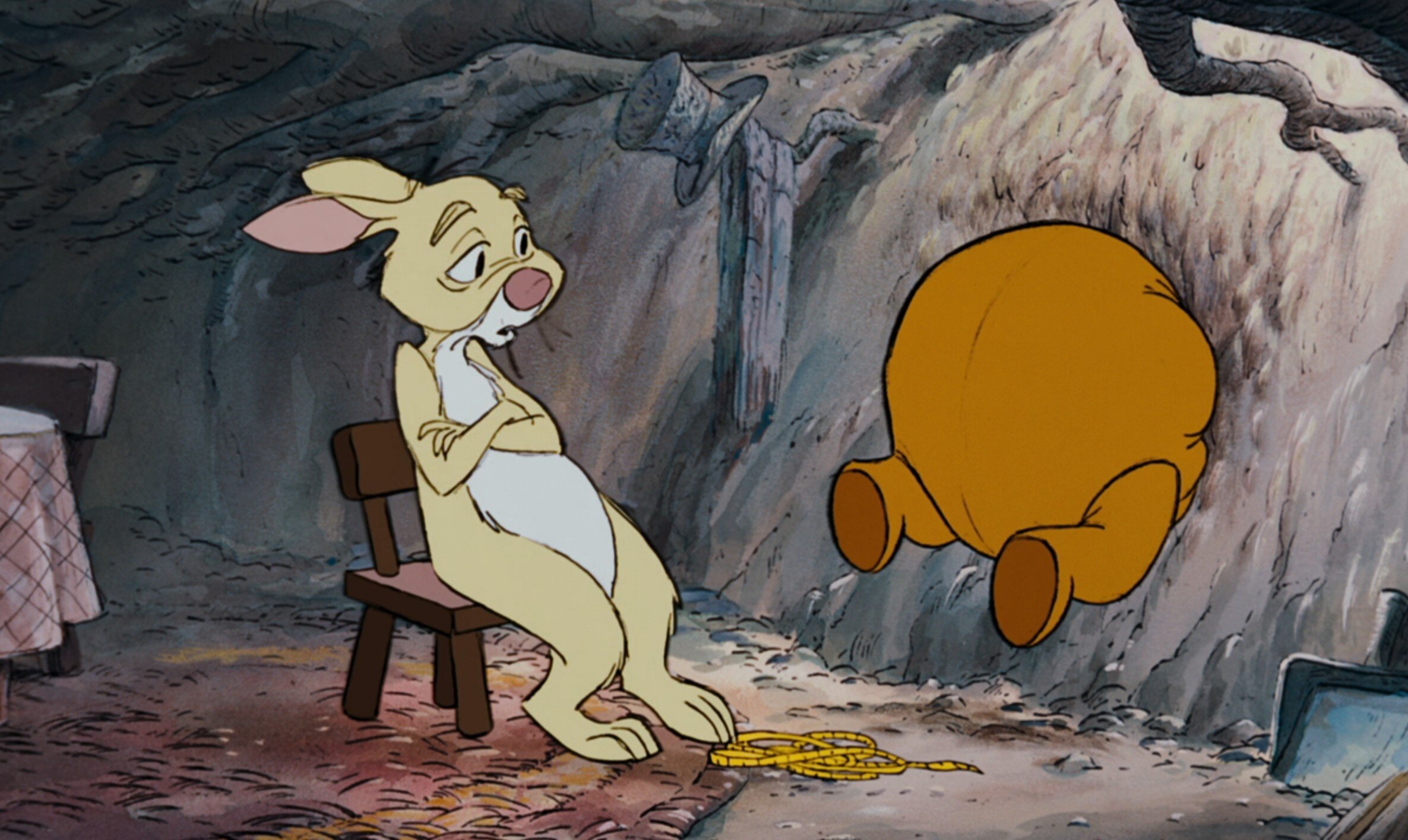Reflections on the Silver Age: Part Two - The Xerox Films
Early on in my rewatching marathon–(can you still call it a marathon if it takes you more than a year to finish? don’t answer that)–I bought a book by Leonard Maltin about Disney films. I was hoping to get some insight into the technologies that underpin the films that have largely defined the public understanding of American animation, and to help situate the films in the context of their historical legacies. What I got instead was Leonard Maltin waxing poetic about Walt Disney, his struggles as a businessman, and the ultimate triumphs of his artistic expression.
It’s a bizarre document, but it’s illuminating particularly for this specific era of Disney films. What it lacks in analysis it makes up for in a populist worldview that mirrors how the larger culture has absorbed the idea of these films rather than engaging with the films themselves. Beyond the whitewashing of their outward racism–which Maltin never mentions beyond an occasional shrug and a classic “it’s hardly enough to throw the whole thing out”–each of the films in Disney’s Silver Age brings with it a feeling of grandeur, romance, and soul-filled fantasy that define the company’s family-friendly aesthetic. Or, at least, the family-friendly aesthetic that Disney desperately wants you to believe they have.
The films of the Disney Renaissance typify what we think of today as a Disney film, but the films of the Silver Age typify what we think of as Disney the brand. It’s the origin of their iconography, down to Sleeping Beauty’s grand, impossible castle persisting as their logo for decades. They take on extra weight in Disney lore as the final films ol’ Walt worked on before he (presumably) imagined his daughter kissing a blackman and his heart stopped.
Few of the films I’ve watched so far actually feel like they reach the bar of deserving their classic status, despite Disney’s powerfully churning propaganda machine. I am excited, though, that for this article I finally get to write about a stone cold masterpiece, and a contender for topping my list once I’ve finished all these write-ups.
Sleeping Beauty (1959) - 4/5
If Snow White was Disney’s first breakthrough, a piecing together of the company’s technological advances to invent a new type of feature-length filmmaking, Sleeping Beauty is their second. The film looks like a tapestry, finely woven and vibrantly expressive. The gorgeous paintings in its backdrop are unlike anything the studio had attempted since Fantasia. Sleeping Beauty took the technical advances first tested on Lady and the Tramp and put them into full use. The result is visually stunning, with fantastical landscapes that feel endless. This is a perfectly designed fairy tale.
It’s slightly frustrating, then, that the story (and the character of its titular heroine) is so thin. Princess Aurora is notoriously tight lipped, even for the already often damselled Disney princesses--she only has 18 lines in the film, the least of any “main” character aside from Dumbo. The film is begging for her to have something, anything to do. The film happens to her, she doesn’t make any actions that have any effect on the world around her, completely undermining the stakes and making it tough to engage with the narrative.
Maleficent comes to the rescue, however. One of the best designed characters in Disney history, she overflows with malice, injecting charisma into the heart of the film where there was none--to the point where you’re almost rooting for her to win. She basically saves the plot, and therefore the movie, rescuing you from the duller diversions and pulling you to the thrilling final battle. Everything’s wrapped up a bit too neatly and quickly (Aurora literally has no lines after she’s woken up), and it’s hard not to wish that the film was actually about her instead of about the things happening around her. Still, it’s great to look at, and Maleficent is beyond iconic.
One Hundred and One Dalmatians (1961) - 5/5
After Sleeping Beauty disappointed at the box office, Walt Disney had to figure out how to cut costs if he wanted to keep his animation division running. As a result, he let his animators experiment with a process to Xerox the penciled images onto film, saving money but leaving some of the remnants of the pencilwork in the finished image. The effect is clumsy, jazzy, and full of life. In attempting to cut corners, Disney accidentally created a masterpiece.
That quality of the animation, the slapdash and slippery movements, is mirrored in every element of the film, from its character design to its backdrops. The colorwork is envigorating, with splashes of color bleeding out from the linework and smearing together to create a vivid world. The result is as infectious as its masterful, lone song, the greatest villain song in Disney history--and one of the all time great diss tracks--“Cruella De Vil.”
From minute one this film takes off, starting on an all time great opening title sequence and moving into an adorable meet cute that most modern romances would struggle to match.
One Hundred and One Dalmatians is maybe the film I’m most unable to be objective about. I have watched it probably dozens of times. This rewatch didn’t dim its light for me in the slightest. It’s likely, barring a huge surprise, that at the end of all this it will remain at #1 on my Disney ranking. But I can’t fight the joy this film brings me, from start to finish.
What Scared Reid: As with most (but not all) things that frightened me as a kid in these films, I had a very overblown memory of Cruella De Vil’s crazy eyes while she chased the Dalmatians in her car. They’re certainly manic, but they’re nowhere near as demonic as I recalled. This is also another film where I distinctly remembered her dying in a scene that I had completely made up. She survives to watch you from underneath a rock, forever.
The Sword in the Stone (1963) - 2.5/5
Maybe the film from this era that most feels like a holdover from the package era films, The Sword in the Stone is a series of vignettes that have basically less than no stakes. This is less a full film than a series of Three Stooges gags animated with the loosest of plots. That could be fine on its own, but it feels empty when placed over the top of one of an epic legend like the story of King Arthur.
Disney is a very poor fit for high fantasy, at least when they’re in this mode. This is a swords and sorcery film where both of those things are a punchline, a parody of a film that doesn’t really exist. The diversions themselves are lighthearted enough, but they’re unfortunately pretty boring. It’s not attempting to be an epic fantasy, and it’s not succeeding at being a chill hangout romp like it wants to be. One of the things that makes T.H. White’s The Sword in the Stone work is that it balances the Wart’s shapeshifting lessons with enough high adventure to undercut the silliness. Most of that is cut out here, and the gags that replace them often fall flat.
The film gets a spark of life when Madame Mim enters and has her magic duel with Merlin, but she shows up roughly 60 minutes into an 80 minute film and is gone by minute 67. Mim is barely a villain, and she feels as dangerous as any of the other moments of action in the film (which is to say, not at all). On the whole, an inoffensive film that mostly breezes past, The Sword in the Stone earns a passing grade mostly by being not as bad as the horrific attempt Disney would make at telling this kind of story more earnestly 20 years later.
The Jungle Book (1967) - 3/5
Another vignette-filled adventure, The Jungle Book is more successful as a hangout film because most of the characters are characters that are actually enjoyable to hang with. Mowgli is mostly annoying (he is a child, so try not to hold it against him), but the rest of the cast is a blast. The script feels a little weak at times, with some of the plot contrivances feeling a little bit too convenient.
Shere Khan, our big bad, also doesn’t feel quite as sinister as he should, mostly due to the film not quite letting go of the slapstick humor that Disney’s writers of the era must have felt was essential to keep kids engaged. Khan is a tiger equivalent to Captain Hook, getting clowned on frequently throughout the film and through the film’s final battle.
The design here is a bit lacking, as well, particularly in comparison to the Disney films at the beginning of the era. This is the last film Disney oversaw before his death, and it’s hard not to feel like he wasn’t all the way on his game. The character designs are simple to a fault, and the design of the jungle doesn’t have much life or originality to it. Everything feels a little flat, like it needed a bit more personality. Thankfully the music delivers some life, and the characters mostly make this a world worth visiting.
It bears mentioning the extremely bizarre construction of “I Wan’na Be Like You,” a jazzy number that very explicitly shades the orangutans of the film as Black and has them sing in jive about how much they wish they were human. It’s an odd beat, one that doesn’t sit well in your ears in the present day, but not nearly as egregious of a sin some of Disney’s earlier racist story beats. It hurt my enjoyment of the overall film, but The Jungle Book is still a charmer on the whole.








